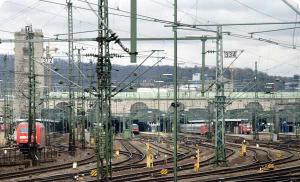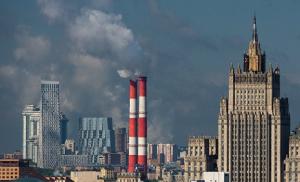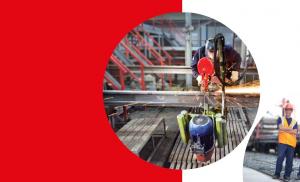Pyrometallurgical method for the production of copper. Mechanical properties of copper
In insignificant concentration may be present:
- nickel;
- gold;
- platinum;
- silver.
Deposits all over the world have approximately the same set of chemical elements in the composition of the ore, only their difference percentage... Various industrial methods are used to obtain pure metal. Almost 90% metallurgical enterprises use the same method of producing pure copper - pyrometallurgical.

The scheme of this process also makes it possible to obtain metal from secondary raw materials, which is a significant advantage for the industry. Since the deposits belong to the group of non-renewable ones, the reserves decrease every year, the ores become poorer, and their extraction and production becomes expensive. This ultimately affects the price of the metal on the international market. In addition to the pyrometallurgical method, there are also ways:
- hydrometallurgical;
- fire refining method.
Stages of pyrometallurgical copper production

The industrial production of copper using the pyrometallurgical method has advantages over other methods:
- the technology provides high productivity - with its help it is possible to obtain metal from rocks in which the copper content is even lower than 0.5%;
- allows you to efficiently process secondary raw materials;
- reached high degree mechanization and automation of all stages;
- when using it, emissions of harmful substances into the atmosphere are significantly reduced;
- the method is economical and efficient.
Enrichment

Ore beneficiation scheme
At the first stage of production, it is necessary to prepare ore, which is delivered to processing plants directly from a quarry or mine. Often meet large chunks rocks that must first be crushed.
This happens in huge crushing plants. After crushing, a homogeneous mass is obtained, with a fraction of up to 150 mm. Pre-enrichment technology:
- raw materials are poured into a large container and filled with water;
- then oxygen is added under pressure to form a foam;
- metal particles stick to the bubbles and rise to the top, and waste rock settles at the bottom;
- further, the copper concentrate is sent for roasting.
Burning
This stage aims to reduce the sulfur content as much as possible. The ore mass is placed in a furnace, where the temperature is set at 700–800 o C. As a result of thermal action, the sulfur content is halved. Sulfur oxidizes and evaporates, and some of the impurities (iron and other metals) transforms into an easily slagged state, which will facilitate smelting in the future.

This stage can be omitted if the rock is rich and contains, after enrichment, 25–35% copper, it is used only for poor ores.
Matte melting
Matte smelting technology makes it possible to obtain blister copper, which differs by grades: from MCh1 - the purest to MCh6 (contains up to 96% of pure metal). During the smelting process, the raw materials are immersed in a special furnace, in which the temperature rises to 1450 o C.

After melting the mass, it is blown through with compressed oxygen in converters. They are horizontal and blown through the side opening. As a result of blowing, iron and sulfur sulfides are oxidized and transferred to slag. Heat in the converter is generated due to the flow of a hot mass; it does not heat up additionally. At the same time, the temperature is 1300 ° C.

At the outlet of the converter, a rough composition is obtained, which contains up to 0.04% iron and 0.1% sulfur, as well as up to 0.5% of other metals:
- tin;
- antimony;
- gold;
- nickel;
- silver.
Such rough metal is cast into ingots weighing up to 1200 kg. This is the so-called anode copper. Many manufacturers stop at this stage and sell such ingots. But since copper production is often accompanied by the extraction of precious metals, which are contained in the ore, the processing plants use the technology of refining the rough alloy. In this case, other metals are released and preserved.
Refining using cathode copper
The technology for producing refined copper is quite simple. Its principle is used even for cleaning copper coins from oxides at home. The production scheme looks like this:

- a rough ingot is placed in an electrolyte bath;
- a solution with the following content is used as an electrolyte:
- copper sulfate - up to 200 g / l;
- sulfuric acid - 135-200 g / l;
- colloidal additives (thiourea, wood glue) - up to 60 g / l;
- water.
- the electrolyte temperature should be up to 55 ° C;
- Plates of cathode copper are placed in the bath - thin sheets of pure metal;
- electricity is connected. At this time, the electrochemical dissolution of the metal occurs. Copper particles are concentrated on the cathode plate, while other inclusions settle at the bottom and are called sludge.
In order for the process of obtaining refined copper to proceed faster, the anode ingots should be no more than 360 kg.
The entire electrolysis process takes place within 20–28 days. During this period, take out the cathode copper up to 3-4 times. The weight of the plates is up to 150 kg.
How it's done: copper mining
During the refining process, dendrites can form on the copper cathode - build-ups that shorten the distance to the anode. As a result, the speed and efficiency of the reaction is reduced. Therefore, when dendrites appear, they are immediately removed.
Copper hydrometallurgical production technology

This method has not become widespread, since, in this case, you can lose precious metals contained in copper ore.
Its use is justified when the rock is poor - it contains less than 0.3% red metal.
How to get copper by hydrometallurgical method?
First, the rock is crushed to a fine fraction. Then it is placed in an alkaline composition. The most commonly used solutions are sulfuric acid or ammonia. During the reaction, the copper is displaced by the iron.

Cementation of copper with iron
The solutions of copper salts remaining after leaching undergo further processing - cementation:
- iron wire, sheets or other scraps are placed in the solution;
- during chemical reaction iron displaces copper;
- as a result, the metal is precipitated in the form of a fine powder, in which the copper content reaches 70%. Further purification takes place by electrolysis using a cathode plate.
Blister copper flame refining technology
This method of producing pure copper is used when the feedstock is scrap copper.
The process takes place in special reverberatory furnaces that are fired with coal or oil. The melted mass fills the bath, into which air is blown through iron pipes:
- pipe diameter - up to 19 mm;
- air pressure - up to 2.5 atm;
- furnace capacity - up to 250 kg.
In the process of refining, copper raw materials are oxidized, sulfur burns out, then metals. Oxides do not dissolve in liquid copper, but float to the surface. To remove them, quartz is used, which is placed in the bath before the start of the refining process and placed along the walls.

If nickel, arsenic or antimony is present in the scrap metal, the technology becomes more complicated. The percentage of nickel in refined copper can only be reduced to 0.35%. But if the rest of the components (arsenic and antimony) are present, then nickel "mica" is formed, which dissolves in copper, and it will not be possible to remove it.
Video: Copper ores of the Urals
PYROMETALLURGIC METHOD FOR COPPER PRODUCTION.
There are two known methods for extracting copper from ores and concentrates: hydrometallurgical and pyrometallurgical.
The first one did not find wide application... It is used in the processing of poor oxidized and native ores. This method, in contrast to the pyrometallurgical method, does not allow the extraction of precious metals along the way with copper.
The second method is suitable for processing all ores and is especially effective when the ores are beneficiated.
The basis of this process is smelting, in which the molten mass is divided into two liquid layers: matte-alloy of sulfides and slag-alloy of oxides. Either copper ore or roasted copper ore concentrates are smelted. Roasting of concentrates is carried out in order to reduce the sulfur content to optimal values.
Liquid matte is blown in converters with air to oxidize sulphide, transfer iron to slag and release blister copper.
Preparation of ores for smelting.
Most of the copper ores are concentrated by flotation. As a result, a copper concentrate is obtained containing 8-35% Cu, 40-50% S, 30-35% Fe and waste rock, the main constituents of which are SiO2, Al2O3 and CaO.
The concentrates are usually roasted in an oxidizing environment in order to remove about 50% of the sulfur and obtain a roasted concentrate with the sulfur content required to produce a sufficiently rich matte during smelting.
Roasting ensures good mixing of all components of the charge and heating it up to 550-600 ° C and, ultimately, halving the fuel consumption in the reverberatory furnace. However, when the fired charge is remelted, the loss of copper in the slag and the carryover of dust somewhat increase. Therefore, usually rich copper concentrates (25-35% Cu) are smelted without roasting, and poor (8-25%
Cu) is fired.
The firing temperature of concentrates is used in multi-hearth furnaces with mechanical overheating. Such ovens operate continuously.
Smelt Copper Matte
Copper matte, composed mainly of copper and iron sulfides
(Cu2S + FeS = 80-90%) and other sulfides, as well as oxides of iron, silicon, aluminum and calcium, are smelted in furnaces of various types.
It is advisable to concentrate complex ores containing gold, silver, selenium and tellurium so that not only copper, but also these metals is transferred to the concentrate. The concentrate is melted into matte in reverberant or electric furnaces.
It is advisable to process sulfurous, pure copper ores in shaft furnaces.
With a high sulfur content in ores, it is advisable to use the so-called process of copper-sulfur smelting in a shaft furnace with the capture of gases and the extraction of elemental sulfur from them.
The furnace is charged with copper ore, limestone, coke and recycled products.
Loading is carried out in separate portions of raw materials and coke.
A reducing environment is created in the upper horizons of the mine, and an oxidizing one in the lower part of the furnace. The lower layers of the charge melt, and it gradually descends towards the flow of hot gases. The temperature at the tuyeres reaches 1500 ° C at the top of the furnace, it is approximately 450 ° C.
Such a high temperature of the exhaust gases is necessary in order to ensure the possibility of cleaning from dust before the beginning of condensation of sulfur vapor.
In the lower part of the furnace, mainly at the tuyeres, the following main processes take place: a) Combustion of coke carbon
C + O2 = CO2
b) Combustion of iron sulfide sulfur
2FeS + 3O2 = 2 FeO + 2SO2 c) Formation of iron silicate
2 FeO + SiO2 = (FeO) 2 (SiO2
Gases containing CO2, SO2, excess oxygen and nitrogen pass upward through the charge column. On this path of gases, heat exchange between the charge and them takes place, as well as the interaction of CO2 with carbon of the charge. At high temperatures, CO2 and SO2 are reduced by carbon in coke, and carbon monoxide, carbon disulfide and carbon sulfide are formed:
CO2 + C = 2CO
2SO2 + 5C = 4CO + CS2
SO2 + 2C = COS + CO
In the upper horizons of the furnace, pyrite decomposes according to the reaction:
FeS2 = Fe + S2
At a temperature of about 1000 ° C, the most low-melting eutectics of FeS and Cu2S melt, resulting in the formation of a porous mass.
In the pores of this mass, the molten sulphide flow meets the upward flow of hot gases and chemical reactions take place, the most important of which are listed below: a) the formation of copper sulphide from copper oxide
2Cu2O + 2FeS + SiO2 = (FeO) 2 (SiO2 + 2Cu2S; b) formation of silicates from iron oxides
3Fe2O3 + FeS + 3.5SiO2 = 3.5 (2FeO (SiO2) + SO2;
3Fe3O4 + FeS + 5SiO2 = 5 (2FeO (SiO2) + SO2; c) decomposition of CaCO3 and formation of lime silicate
CaCO3 + SiO2 = CaO (SiO2 + CO2; d) reduction of sulfur dioxide to elemental sulfur
SO2 + C = CO2 + Ѕ S2
As a result of smelting, a matte containing 8-15% Cu, a slag consisting mainly of iron silicates and lime, a blast furnace gas containing S2, COS, H2S, and CO2 are obtained. Dust is first precipitated from the gas, then sulfur is extracted from it (up to 80% S)
To increase the copper content in the matte, it is subjected to contractile smelting. Melting is carried out in the same shaft furnaces. Matte is loaded in pieces of 30-100 mm in size together with quartz flux, limestone and coke. Coke consumption is 7-8% of the charge weight. The result is a copper-enriched matte (25-40% Cu) and slag (0.4-0.8%
Cu).
The melting point of the remelting of the concentrates, as already mentioned, are used with reflective and electric furnaces. Sometimes kilns are located directly above the deck of reverberatory kilns so as not to cool the fired concentrates and use their heat.
As the charge heats up in the furnace, the following reduction reactions of copper oxide and higher iron oxides occur:
6CuO + FeS = 3Cu2O + SO2 + FeO;
FeS + 3Fe3O4 + 5SiO2 = 5 (2FeO (SiO2) + SO2
As a result of the reaction of the formed copper oxide Cu2O with FeS,
Cu2S:
Cu2O + FeS = Cu2S + FeO
Sulfides of copper and iron, fusing with each other, form primary matte, and molten iron silicates, flowing down the surface of the slopes, dissolve other oxides and form slag.
Noble metals (gold and silver) dissolve poorly in slag and almost completely transform into matte.
The matte of reflective smelting is 80-90% (by weight) composed of copper and iron sulfides. Matte contains,%: 15-55 copper; 15-50 iron; 20-30 sulfur; 0.5-
1.5 SiO2; 0.5-3.0 Al2O3; 0.5-2.0 (CaO + MgO); about 2% Zn and a small amount of gold and silver. Slag mainly consists of SiO2, FeO, CaO,
Al2O3 and contains 0.1-0.5% copper. The extraction of copper and precious metals in matte reaches 96-99%.
Copper Matte Conversion
In 1866, the Russian engineer G.S. Semennikov proposed using a Bessemer-type converter for blowing the matte. Blowing the matte from the bottom with air provided only half-sulfur copper (about 79% copper) - the so-called white matte. Further blowing led to solidification of the copper. In 1880, a Russian engineer proposed a converter for blowing matte with a side blowing, which made it possible to obtain blister copper in converters.
The converter is made 6-10 in length, with an outer diameter of 3-4 m.
The productivity in one operation is 80-100 tons. The converter is lined with magnesite bricks. The molten matte is poured and the products are discharged through the converter neck located in the middle part of its body. Gases are removed through the same throat. Tuyeres for blowing air are located along the generatrix of the converter surface. The number of lances is usually 46-52 and the diameter of the lance is 50mm. Air consumption reaches 800 m2 / min. Matte is poured into the converter and quartz flux containing 70-
80% SiO2, and usually some gold. It is fed during melting using pneumatic loading through a round hole in the end wall of the converters, or it is loaded through the neck of the converter.
The process can be divided into two periods. The first period (oxidation of iron sulfide to produce white matte) lasts about 6-024 hours, depending on the copper content of the matte. The loading of the quartz flux is started from the beginning of the purge. As the slag accumulates, it is partially removed and a new portion of the original matte is poured into the converter, maintaining a certain level of matte in the converter.
In the first period, the following sulfide oxidation reactions take place:
2FeS + 3O2 = 2FeO + 2SO2 + 930 360 J
2Cu2S + 3O2 = 2Cu2O + 2SO2 + 765600 J
While FeS exists, copper oxide is not stable and turns into sulfide:
Cu2O + FeS = Cu2S + FeO
Iron oxide is slagged with quartz flux added to the converter:
2FeO + SiO2 = (FeO) (SiO2
With a lack of SiO2, iron oxide is oxidized to magnetite:
6FeO + O2 = 2Fe3O4, which goes into slag.
The temperature of the poured matte as a result of these exothermic reactions increases from 1100-1200 to 1250-1350 0С. A higher temperature is undesirable, and therefore, when blowing out poor mattes containing a lot of FeS, coolants are added - solid matte, copper splashes.
From the previous it follows that mainly the so-called white matte, consisting of copper sulfides, remains in the converter, and the slag is discharged during the smelting process. It is mainly composed of various iron oxides
(magnetite, iron oxide) and silica, as well as small amounts of alumina, calcium oxide and magnesium oxide. In this case, as follows from the above, the content of magnetite in the slag is determined by the content of magnetite in the slag is determined by the content of silica. 1.8-
3.0% copper. To extract it, slag in liquid form is sent to a reverberatory furnace or to the hearth of a shaft furnace.
In the second period, called the reaction period, which lasts 2-3 hours, blister copper is formed from white matte. During this period, copper sulfide is oxidized and copper is released by the exchange reaction:
2Cu2S + 3O2 = 2Cu2O + 2SO2
Cu2S + 2Cu2O = 6Cu + O2
Thus, as a result of blowing, blister copper is obtained containing 98.4-99.4% - copper, 0.01-0.04% iron, 0.02-0.1% sulfur, and a small amount of nickel, tin, arsenic , silver, gold and converter slag containing 22-30% SiO2, 47-70% FeO, about 3% Al2O3 and 1.5-2.5% copper.
Introduction ................................................. .................................................. ............ 2
Chapter 1 Properties of copper .............................................. .......................................... 4
Chapter 2 Raw materials for copper production ............................................ ........................ 6
Chapter 3 Pyrometallurgical method of copper production ............................. 7
1. Preparation of ores for smelting ............................................ ........................................ 7
2. Smelting copper matte ............................................. .................................. eight
3. Converting Copper Matte ............................................. ................... eleven
4. Refining copper .............................................. ........................................ thirteen
Conclusion................................................. .................................................. ...... thirteen
Bibliography................................................ ............................................ 14
Appendix................................................. .................................................. ..... 15
INTRODUCTION
The division of metals into ferrous and non-ferrous is conditional. Typically, ferrous metals include iron, manganese and chromium, and the rest of the metals are non-ferrous. The term non-ferrous metals should not be taken literally. In fact, there are only two non-ferrous metals: pink copper and yellow gold, and in
INTRODUCTION
Copper (lat.Cuprum) - chemical element... One of the seven metals known since antiquity. According to some archaeological data, copper was well known to the Egyptians as early as 4000 years BC. The acquaintance of mankind with copper refers to more early era than with iron; this is explained, on the one hand, by the more frequent presence of copper in a free state on the surface of the earth, and on the other hand, by the comparative ease of obtaining it from compounds. Ancient Greece and Rome received copper from the island of Cyprus (Cyprum), hence its name Cuprum. Copper is especially important for electrical engineering.
In terms of electrical conductivity, copper ranks second among all metals, after silver. However these days all over the world electric wires, which used to take almost half of the copper smelted, are increasingly made from aluminum. It conducts current worse, but easier and more accessible. Copper, like many other non-ferrous metals, is becoming increasingly scarce. If in the 19th century. Copper was mined from ores containing 6-9% of this element, but now 5% copper ores are considered very rich, and the industry of many countries processes ores, in which only 0.5% copper.
Copper is one of the essential trace elements. It participates in the process of photosynthesis and assimilation of nitrogen by plants, promotes the synthesis of sugar, proteins, starch, vitamins. Most often, copper is introduced into the soil in the form of pentahydrate sulfate - copper sulfate. In significant quantities, it is poisonous, like many other copper compounds, especially for lower organisms... In small doses, copper is absolutely necessary for all living things.
Thus, the division of metals into ferrous and non-ferrous is conditional. Typically, ferrous metals include iron, manganese and chromium, and the rest of the metals are non-ferrous. The term non-ferrous metals should not be taken literally. In fact, there are only two non-ferrous metals: pink copper and yellow gold, and in relation to other metals, one can speak not about their color, but about their various shades, most often silver-gray or red tones.
Also, non-ferrous metals can be conditionally divided into four groups:
1 Heavy metals - Cu, Ni, Pb, Zn, Sn;
2 Light metals - Al, Mg, Ca, K, Na, Ba, Be, Li;
3 Noble metals - Au, Ag, Pt and its natural satellites
4 Rare metals:
Refractory
Radioactive
Rare earth
PROPERTIES OF COPPER
Copper is a chemical element of group I of the periodic system of Mendeleev; atomic number 29, atomic mass 63.546. Melting point - 1083 ° C; boiling point - 2595 ° C; density - 8.98 g / cm 3. According to the geochemical classification of V.M. Goldschmidt, copper belongs to chalcophilic elements with high affinity for S, Se, Te, occupying the ascending parts of the atomic volume curve; they are concentrated in the lower mantle and form a sulfide oxide shell.
In the first half of 1930, Vernadsky carried out studies of changes in the isotopic composition of water, which is part of various minerals, and experiments on the separation of isotopes under the influence of biogeochemical processes, which was confirmed by subsequent careful studies. As an odd element, it consists of two odd isotopes 63 and 65. The share of the isotope Cu (63) is 69.09%, the percentage of the isotope Cu (65) is 30.91%. In compounds, copper exhibits valences of +1 and +2; a few trivalent copper compounds are also known.
Only deep-seated compounds, primary sulfides and the cuprite mineral Cu2O belong to valence 1. All other minerals, about a hundred, correspond to a valency of two. The radius of monovalent copper is +0.96, which corresponds to eq - 0.70. The atomic radius of bivalent copper is 1.28; ionic radius 0.80.
The magnitude of the ionization potentials is very interesting: for one electron - 7.69, for two - 20.2. Both figures are very large, especially the second, which shows the great difficulty of detaching the outer electrons. Monovalent copper is of equal quantum and therefore leads to colorless salts and weakly colored complexes, while different quanta of bivalent copper is characterized by the coloration of salts in combination with water.
Copper is a relatively low active metal. In dry air and oxygen at normal conditions copper is not oxidized. It easily reacts with halogens, sulfur, selenium. But copper does not interact with hydrogen, carbon and nitrogen even at high temperatures. Acids that do not have oxidizing properties do not affect copper.
The electronegativity of atoms is the ability to attract electrons when entering into compounds. Electronegativity of Cu 2+ - 984 kJ / mol, Cu + - 753 kJ / mol. Elements with sharply different EOs form an ionic bond, and elements with close EOs form a covalent bond. Heavy metal sulfides have an intermediate bond, with a greater proportion of covalent bonds (EO in S-1571, Cu-984, Pb-733). Copper is an amphoteric element - it forms cations and anions in the earth's crust.
Copper is included in more than 198 minerals, of which only 17 are important for industry, mainly sulfides, phosphates, silicates, carbonates, sulfates. The main ore minerals are chalcopyrite CuFeS 2, covellite CuS, bornite Cu 5 FeS 4, chalcocite Cu 2 S.
Oxides: tenorite, cuprite. Carbonates: malachite, azurite. Sulfates: chalcanthite, brochantite. Sulfides: covellite, chalcocite, chalcopyrite, bornite.
Pure copper is a viscous, viscous red metal, pink in a fracture; in very thin layers, copper looks greenish-blue to the light. The same colors are typical for many copper compounds, both in the solid state and in solutions.
A decrease in color with an increase in valence can be seen from the following two examples:
CuCl - white, Cu 2 O - red, CuCl 2 + H 2 O - blue, CuO - black
Carbonates are characterized by blue and in green subject to the water content, which is an interesting practical sign for the search.
Practical value have: native copper, sulfides, sulfosalts and carbonates (silicates).
RAW MATERIALS FOR COPPER PRODUCTION
To obtain copper, copper ores are used, as well as waste of copper and its alloys. The ores contain 1-6% copper.
In ores, copper is usually found in the form of sulfur compounds (copper pyrite or chalcopyrite CuFeS 2, chalcocite Cu 2 S, covelin CuS), oxides (cuprite Cu 2 O, tenorite CuO) or hydrocarbonates (malachite CuCO 3 × Cu (OH 2), azurite 2CuCO 3 × Cu (OH) 2).
Waste rock consists of pyrite FeS, quartz SiO 2, magnesium and calcium carbonates (MgCO 3 and CaCO 3), as well as various silicates containing Al 2 O 3, CaO, MgO and iron oxides.
Ores sometimes contain a significant amount of other metals: zinc, tin, nickel, gold, silver, silicon and others.
The ore is divided into sulphide, oxidized and mixed. Sulphide ores are usually of primary origin, and oxidized ores are formed from the oxidation of the metals of sulphide ores.
The so-called native ores, in which copper is in free form, are found in small quantities.
PYROMETALLURGIC METHOD FOR COPPER PRODUCTION.
There are two known methods for extracting copper from ores and concentrates: hydrometallurgical and pyrometallurgical.
The first of them has not found widespread use. It is used in the processing of poor oxidized and native ores. This method, in contrast to the pyrometallurgical method, does not allow the extraction of precious metals along the way with copper.
The second method is suitable for processing all ores and is especially effective when the ores are beneficiated.
The basis of this process is smelting, in which the molten mass is divided into two liquid layers: matte-alloy of sulfides and slag-alloy of oxides. Either copper ore or roasted copper ore concentrates are smelted. Roasting of concentrates is carried out in order to reduce the sulfur content to optimal values.
Liquid matte is blown in converters with air to oxidize sulphide, transfer iron to slag and release blister copper.
Preparation of ores for smelting.
Most of the copper ores are concentrated by flotation. As a result, a copper concentrate is obtained containing 8-35% Cu, 40-50% S, 30-35% Fe and waste rock, the main constituents of which are SiO 2, Al 2 O 3 and CaO.
The concentrates are usually roasted in an oxidizing environment in order to remove about 50% of the sulfur and obtain a roasted concentrate with the sulfur content required to produce a sufficiently rich matte during smelting.
Roasting ensures good mixing of all components of the charge and heating it up to 550-600 0 С and, ultimately, halving the fuel consumption in the reverberatory furnace. However, when the fired charge is remelted, the loss of copper in the slag and the carryover of dust somewhat increase. Therefore, usually rich copper concentrates (25-35% Cu) are smelted without roasting, and poor (8-25% Cu) are roasted.
The firing temperature of concentrates is used in multi-hearth furnaces with mechanical overheating. Such ovens operate continuously.
Smelt Copper Matte
Copper matte, consisting mainly of copper and iron sulfides (Cu 2 S + FeS = 80-90%) and other sulfides, as well as oxides of iron, silicon, aluminum and calcium, are smelted in furnaces of various types.
It is advisable to concentrate complex ores containing gold, silver, selenium and tellurium so that not only copper, but also these metals is transferred to the concentrate. The concentrate is melted into matte in reverberant or electric furnaces.
It is advisable to process sulfurous, pure copper ores in shaft furnaces.
With a high sulfur content in ores, it is advisable to use the so-called process of copper-sulfur smelting in a shaft furnace with the capture of gases and the extraction of elemental sulfur from them.
The furnace is charged with copper ore, limestone, coke and recycled products. Loading is carried out in separate portions of raw materials and coke.
A reducing environment is created in the upper horizons of the mine, and an oxidizing one in the lower part of the furnace. The lower layers of the charge melt, and it gradually descends towards the flow of hot gases. The temperature at the tuyeres reaches 1500 0 C at the top of the furnace, it is approximately 450 0 C.
Such a high temperature of the exhaust gases is necessary in order to ensure the possibility of cleaning from dust before the beginning of condensation of sulfur vapor.
In the lower part of the furnace, mainly at the tuyeres, the following main processes take place:
a) Combustion of coke carbon
Tutoring
Need help exploring a topic?
Our experts will advise or provide tutoring services on topics of interest to you.
Send a request with the indication of the topic right now to find out about the possibility of obtaining a consultation.
Copper(lat. Cuprum), Cu, chemical element of group I of Mendeleev's periodic system; atomic number 29, atomic mass 63.546; soft, malleable red metal. Natural copper consists of a mixture of two stable isotopes - 63Cu (69.1%) and 65Cu (30.9%).
Receiving... Copper ores are characterized by a low copper content. Therefore, before smelting, finely ground ore is subjected to mechanical enrichment; in this case, valuable minerals are separated from the bulk of the waste rock; As a result, a number of commercial concentrates (for example, copper, zinc, pyrite) and tailings are obtained.
In world practice, 80% of copper is extracted from concentrates by pyrometallurgical methods based on melting the entire mass of the material. In the smelting process, due to the higher affinity of copper for sulfur, and the components of gangue and iron for oxygen, copper is concentrated in the sulfide melt (matte), and the oxides form slag. The matte is separated from the slag by settling.
In most modern factories, smelting is carried out in reverberatory or electric furnaces. In reverberant ovens, the working space is stretched horizontally; hearth area 300 m2 and more (30 m ´ 10 m), the heat required for melting is obtained by burning carbonaceous fuel (natural gas, fuel oil, coal dust) in the gas space above the bath surface. In electric furnaces, heat is obtained by passing an electric current through the molten slag (the current is supplied to the slag through graphite electrodes immersed in it).
However, both reflective and electric melting based on external sources of heat are imperfect processes. Sulfides, which make up the bulk of copper concentrates, have a high calorific value... Therefore, smelting methods are being introduced more and more, in which the heat of combustion of sulphides is used (the oxidizing agent is heated air, air enriched with oxygen, or technical oxygen). Fine, pre-dried sulphide concentrates are blown with a stream of oxygen or air into a red-hot high temperature bake. Particles burn in suspension (oxygen-suspended smelting). Sulfides can also be oxidized in the liquid state; these processes are intensively studied in the USSR and abroad (Japan, Australia, Canada) and become the main direction in the development of pyrometallurgy of sulfide copper ores.
Rich lumpy sulphide ores (2-3% Cu) with a high sulfur content (35-42% S) in some cases are directly sent for smelting in shaft furnaces (furnaces with a vertical working space). In one of the varieties of mine smelting (copper-sulfur smelting), fine coke is added to the charge, which reduces SO2 in the upper horizons of the furnace to elemental sulfur. Copper is also concentrated in the matte in this process.
The resulting liquid matte (mainly Cu2S, FeS) is poured into a converter - a cylindrical tank made of sheet steel, lined with magnesite bricks from the inside, equipped with a side row of tuyeres for blowing air and a device for turning around an axis. Compressed air is blown through the matte layer. Matte conversion takes place in two stages. First, iron sulfide is oxidized, and quartz is added to the converter to bind the iron oxides; converter slag is formed. Then copper sulfide is oxidized to form metallic Copper and SO2. This blister copper is poured into molds. Ingots (and sometimes directly molten blister copper) in order to extract valuable satellites (Au, Ag, Se, Fe, Bi and others) and remove harmful impurities are sent to fire refining. It is based on a higher affinity of metal impurities for oxygen than that of copper: Fe, Zn, Co and partially Ni and others in the form of oxides pass into the slag, and sulfur (in the form of SO2) is removed with gases. After removing the slag, Copper is "teased" by immersing in liquid metal the ends of raw birch or pine logs, after which it is cast into flat shapes. For electrolytic refining, these ingots are suspended in a bath with a CuSO4 solution acidified with H2SO4. They serve as anodes. When current is passed, the anodes dissolve, and pure copper is deposited on the cathodes - thin copper sheets, also obtained by electrolysis in special matrix baths. To isolate dense smooth sediments, surface-active additives (wood glue, thiourea, and others) are introduced into the electrolyte. The obtained cathode copper is washed with water and remelted. Noble metals, Se, Te and other valuable companions Copper are concentrated in the anode sludge, from which they are extracted by special processing. Nickel is concentrated in the electrolyte; taking out part of the solutions for evaporation and crystallization, it is possible to obtain Ni in the form of nickel sulfate.
Copper- one of the most important metals, belongs to the 1st group Periodic table; serial number 29; atomic mass - 63.546; density - 8.92 g / cm 3. melting point - 1083 ° С; boiling point - 2595 ° C. In terms of electrical conductivity, it is somewhat inferior only to silver and is the main conductive material in electrical and radio engineering, consuming 40 ... 50% of all copper. Almost all areas of mechanical engineering use copper alloys - brass and bronze. Copper as an alloying element is included in many aluminum and other alloys.
World production copper in capitalist countries about 6-7 million tons, including secondary copper about 2 million tons. In the USSR, copper smelting for each five years increased by 30 ... 40%.
Copper ores. Copper is found in nature mainly in the form of sulfur compounds CuS (covellite), Cu 2 S (chalcocite) in the composition of sulfide ores (85 ... 95% of reserves), less often in the form of oxide compounds Cu 2 O (cuprite), carbonic compounds CuCO 3 · Сu (ОН) 2 - malachite 2СuСО 3 · Сu (ОН) 2 - azurite and native metallic copper (very rare). Oxide and carbonic compounds are difficult to enrich and are processed by a hydrometallurgical method.
Of the greatest industrial importance in the USSR are sulphide ores, from which about 80% of all copper is obtained. The most common sulfide ores are copper pyrite, copper luster, etc.
All copper ores are poor and usually contain 1 ... 2%, sometimes less than 1% copper. Waste rock, as a rule, consists of sandstone, clay, limestone, iron sulfides, etc. Many ores are complex - polymetallic and contain, in addition to copper, nickel, zinc, lead and other valuable elements in the form of oxides and compounds.
Approximately 90% of primary copper is obtained by pyrometallurgical methods; about 10% by hydrometallurgical method.
Hydrometallurgical method consists in the extraction of copper by leaching (for example, weak solutions of sulfuric acid) and the subsequent separation of metallic copper from the solution. This method, used for the processing of poor oxidized ores, is not widely used in our industry.
Pyrometallurgical method consists in obtaining copper by smelting it from copper ores. It includes enrichment of ore, its roasting, smelting into an intermediate product - matte, smelting of black copper matte, its refining, that is, purification from impurities (Fig. 2.1).
Rice. 2.1. Simplified scheme of pyrometallurgical copper production
The most widely used method for the beneficiation of copper ores is the flotation method. Flotation is based on different water wetting of metal-containing particles and waste rock particles (Fig. 2.2).

Rice. 2.2. Flotation scheme:
a - circuit diagram mechanical flotation machine (option);
b - scheme of floating particles; 1 - stirrer with blades; 2 - partition;
3 - diagram of mineralized foam; 4 - hole for removing tails
(waste rock); I - mixing and aeration zone.
Beneficiation of copper ores... Lean copper ores are beneficiated to obtain a concentrate containing 10 ... 35% copper. When enriching complex ores, it is possible to extract other valuable elements from them.
In the bath of the flotation machine, pulp is fed - a suspension of water, finely ground ore (0.05 ... 0.5 mm) and special reagents forming films on the surface of metal-containing particles that are not wetted by water. Vigorous stirring and aeration creates air bubbles around these particles. They float, extracting metal-containing particles with them, and form a layer of foam on the surface of the bath. Particles of waste rock, wetted with water, do not float and settle to the bottom of the bath.
Ore particles are filtered from the foam, dried and an ore concentrate containing 10 ... 35% copper is obtained. When processing complex ores, selective flotation is used, sequentially separating metal-containing particles of various metals. For this, appropriate flotation reagents are selected.
Burning. Ore concentrates, sufficiently rich in copper, are melted into matte "raw" - without preliminary firing, which reduces copper losses (in the slag - during smelting, entrainment - with dust during firing); the main disadvantage: when smelting raw concentrates, sulfur dioxide SO 2, which pollutes the atmosphere, is not utilized. Roasting of poorer concentrates removes excess sulfur in the form of SO 2, which is used to produce sulfuric acid. When smelting, a matte rich in copper is obtained, the productivity of the smelting furnaces increases 1.5 ... 2 times.
Firing is carried out in vertical multi-hearth cylindrical furnaces (diameter 6.5 ... 7.5 m, height 9 ... 11 m), in which the crushed materials are gradually moved by mechanical strokes from the upper first hearth to the second - located below, then to the third, etc. The required temperature (850 ° C) is provided as a result of the combustion of sulfur (CuS, Cu 2 S, etc.). The resulting sulfur dioxide SO 2 is sent to the production of sulfuric acid.
The productivity of the furnaces is low - up to 300 tons of charge per day, the irrecoverable carryover of copper with dust is about 0.5%.
 A new, progressive method is fluidized bed firing (Fig. 2.3).
A new, progressive method is fluidized bed firing (Fig. 2.3).

The essence of this method lies in the fact that finely ground sulfide particles are oxidized at 600 ... 700 ° C with oxygen from the air entering through the holes in the hearth of the furnace. Under air pressure, the particles of the fired material are in suspension, making continuous movement and forming a "boiling" ("fluidized") layer. The fired material is "poured" over the threshold of the furnace. Waste sulfurous gases are cleaned of dust and sent to sulfuric acid production. With such firing, the intensity of oxidation increases sharply; productivity is several times higher than in multi-hearth furnaces.
Matte melting... Concentrate matte melting is most often carried out in fired furnaces operating on pulverized, liquid or gaseous fuel... Such furnaces have a length of up to 40 m, a width of up to 10 m, a hearth area of up to 250 m 2 and can hold 100 tons or more of remelted materials. In the working space of the furnaces, a temperature of 1500… 1600 ° C develops.
During melting, molten matte gradually accumulates on the bottom of the furnace - an alloy consisting mainly of copper sulfide Cu 2 S and iron sulfide FeS. It usually contains 20 ... 60% Cu, 10 ... 60% Fe and 20 ... 25% S. In the molten state (t PL -950 ... 1050 ° C), matte is processed into blister copper.
Smelting of concentrates is also carried out in electric furnaces, in shaft furnaces and in other ways. Technically perfect smelting in electric furnaces (the current passes between the electrodes in the slag layer) has found limited application due to the high consumption of electricity. Copper lump ores with high copper and sulfur contents are often smelted in vertical air-blasted shaft furnaces. The charge consists of ore (or briquettes), coke and other materials. The melted poor matte with 8 ... 15% Cu is enriched by re-melting to 25 ... 4% Cu, removing the excess iron. This smelting is economically profitable, since up to 90% of the elemental sulfur of the ore is captured from the furnace gases.
Blister copper smelted by blowing the molten matte with air in horizontal cylindrical converters (Fig. 2.4) with the main lining (magnesite) with a melt mass of up to 100 tons. The converter is mounted on support rollers and can be rotated to the required position. Air blast is supplied through 40-50 lances located along the converter.
Molten matte is poured through the neck of the converter. In this case, the converter is turned so that the air tuyeres are not flooded. Sand is loaded onto the matte surface through a throat or a special pneumatic device - a flux for slagging iron oxides formed during blowing. Then the air blast is turned on and the converter is turned to the operating position when the tuyeres are below the level of the melt. Matte density (5g / cm 3) is much less specific gravity copper (8.9 g / cm 3). Therefore, during the smelting process, the matte is topped up several times: until the entire capacity of the converter, designed for the copper being smelted, is used. Air blowing lasts up to 30 hours. The process of smelting blister copper from matte is divided into two periods.


In the first period, FeS is oxidized by air blast oxygen according to the reaction
2FeS + ЗО 2 = 2FeO + 2SO 2 + Q.
The resulting iron oxide FeO is slagged with silica SiO 2 flux:
2FeO + SiO 2 = SiO 2 ∙ 2FeO + Q.
If necessary, the formed ferruginous slag is drained through the throat (by turning the converter), new portions of matte are added, the flux is loaded, and the blowing is continued. By the end of the first period, the iron is almost completely removed. Matte consists mainly of Cu 2 S and contains up to 80% copper.
Slag contains up to 3% Cu and is used for matte melting.
In the second period, favorable conditions are created for the course of reactions
2Cu 2 S + 3O 2 = 2Cu 2 O + 2SO 2 + Q;
Cu 2 S + 2Cu 2 O = 6Cu + SO 2 - Q,
leading to the recovery of copper.
As a result of melting in a converter, blister copper is obtained. It contains 1.5 ... 2% impurities (iron, nickel, lead, etc.) and cannot be used for technical needs. Smelting copper is discharged from the converter through the throat, poured on casting machines into ingots (bayonets) or plates and sent for refining.
Refining of copper - its purification from impurities - is carried out by fire and electrolytic methods.
Fire refining is carried out in flame furnaces with a capacity of up to 400 tons. Its essence lies in the fact that zinc, tin and other impurities are more easily oxidized than copper itself, and can be removed from it in the form of oxides. The refining process consists of two periods - oxidation and reduction.
V oxidative During the period, the impurities are partially oxidized already during the melting of copper. After complete melting, to accelerate oxidation, the copper is blown with air by feeding it through steel tubes immersed in the liquid metal. Oxides of some impurities (SbO 2, PbO, ZnO, etc.) are easily sublimated and removed with furnace gases. Another part of the impurities forms oxides, passing into slag (FeO, Al 2 O s, SiO 2). Gold and silver do not oxidize and remain dissolved in copper.
During this smelting period, copper is also oxidized by the reaction 4Cu + O 2 = 2Cu 2 O.
The task restorative period is the deoxidation of copper, that is, the reduction of Cu 2 0, as well as the degassing of the metal. For its implementation, the oxidizing slag is completely removed. A layer of charcoal is poured onto the surface of the bath, which protects the metal from oxidation. Then the so-called teasing of copper is carried out. First, raw and then dry poles (poles) are immersed in the molten metal. As a result of dry distillation of wood, water vapor and gaseous hydrocarbons are released, they vigorously stir the metal, helping to remove gases dissolved in it (teasing for density).
Gaseous hydrocarbons deoxidize copper, for example, by the reaction 4Cu 2 O + CH 4 = 8Cu + CO 2 + 2H 2 O (teasing for malleability). Refined copper contains 0.3 ... 0.6% Sb and other harmful impurities, sometimes up to 0.1% (Au + Ag).
Finished copper is tapped from the furnace and poured into ingots for rolling or into anode plates for subsequent electrolytic refining. The purity of copper after fire refining is 99.5 ... 99.7%.
Electrolytic refining ensures you get the cleanest, high quality copper... Electrolysis is carried out in baths made of reinforced concrete and wood, inside lined with sheet lead or vinyl plastic. The electrolyte is a solution of copper sulphate (CuSO 4) and sulfuric acid, heated to 60 ... 65 ° C. Anodes are 1x1 m plates 40 ... 50 mm thick, cast from refined copper. Thin sheets (0.5 ... 0.7 mm) made of electrolytic copper are used as cathodes.
Anodes and cathodes are placed in the bath alternately; up to 50 anodes are placed in one bath. Electrolysis is carried out at a voltage of 2 ... 3 V and a current density of 100 ... 150 A / m 2.
When direct current is passed, the anodes gradually dissolve, copper goes into solution in the form of Cu 2+ cations. At the cathodes, the cations Cu 2+ + 2e → Cu are discharged and metallic copper is precipitated.
Anode plates dissolve in 20 ... 30 days. The cathodes are built up within 10 ... 15 days to a mass of 70 ... 140 kg, and then removed from the bath and replaced with new ones.
During electrolysis, hydrogen is released at the cathode and dissolves in copper, which causes embrittlement of the metal. Subsequently, cathode copper is remelted in smelting furnaces and poured into ingots to obtain sheets, wire, etc. This removes hydrogen. Electricity consumption per 1 ton of cathode copper is 200 ... 400 kWh. Electrolytic copper has a purity of 99.95%. Part of the impurities settles at the bottom of the bath in the form of sludge, from which gold, silver and some other metals are extracted.













